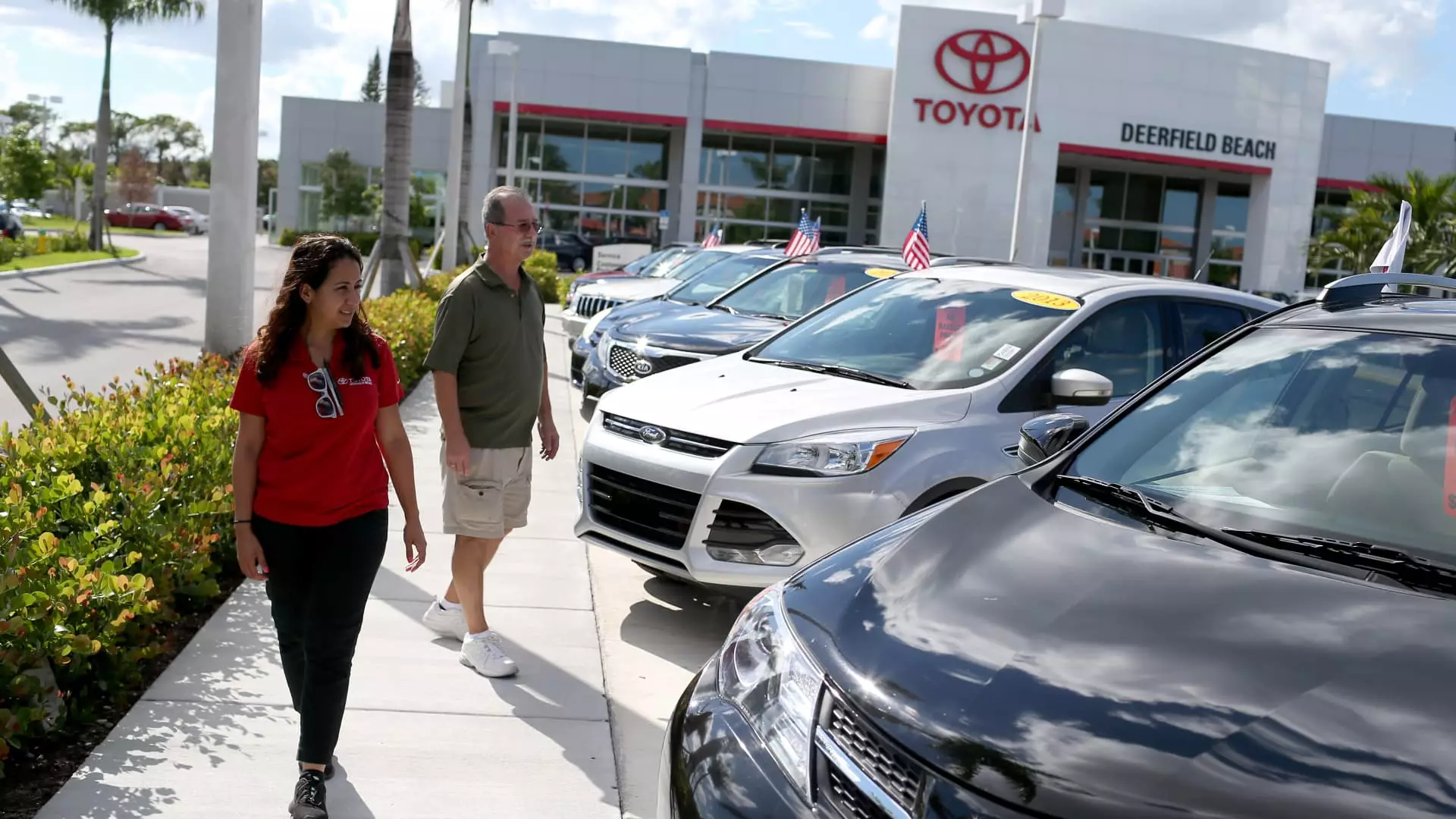As we stand at the precipice of a significant shift in the automotive landscape, the ramifications of President Donald Trump’s newly implemented 25% tariffs on imported vehicles are becoming ever clearer. The news from Cox Automotive paints a troubling picture: prices for both new and used vehicles are anticipated to rise sharply, potentially alienating price-sensitive American consumers just when they need stability the most. What was once a market reliant on competitive pricing is now poised to embrace an upward spiral that could impose severe burdens on everyday Americans.
The very fabric of consumer confidence is at stake. With new car prices projected to surge by up to $6,000 for imports and approximately $3,600 for U.S.-assembled models—as if purchasing a vehicle wasn’t stressful enough—consumers are likely to retreat from making decisions. A market that once thrived on affordability may now be cornered into an era of exorbitant pricing where only those with substantial disposable income can afford to participate.
Economic Dynamics Shifting Underfoot
The dynamics of supply and demand cannot be overstated when discussing the repercussions of these tariffs. While the automotive industry’s knee-jerk reactions might include temporary deals on employee prices from major domestic manufacturers like Ford and Stellantis, the long-term effects will likely foster a scarcity in affordable options. Jeremy Robb of Cox notes that “volatility in pricing” could become the new normal, and he’s not wrong. The stark reality is that less competition and a steeper price tag may reshape consumer preferences away from purchasing new cars altogether.
As President Trump places the brunt of these tariffs on imported vehicles, domestic automakers have opted for varied strategies. Some have initiated temporary price reductions, a strategy that feels more like a band-aid on a gaping wound rather than a comprehensive solution. The wider implications of these tariffs could lead us down a rabbit hole from which recovery may prove cumbersome. Coupled with an already unstable consumer purchasing environment, one can’t help but feel a growing sense of disillusionment and unease.
The Ripple Effect on Used Car Prices
While tariffs primarily target new vehicles, their collateral damage spills over to the used car market, which is the mainstay for average American car buyers. Let’s face it: not everyone can afford to buy new, and the used car market is generally perceived as the last bastion of affordability in an increasingly constricted marketplace. Cox Automotive’s projections estimate a 2.1% to 2.8% increase in used vehicle prices, shattering previous forecasts of mere stability. The average listing price of a used car now hovers around $25,000—a figure that feels alarming for those just trying to secure reliable transportation.
What we are witnessing is not just price hikes but a major psychological shift in consumer behavior. People will think twice before making large purchases, and many buyers may ultimately shy away from the market entirely. The volatility that once characterized the used vehicle sector has morphed into an unpredictable monster driven by external pressures and insufficient supply. Like a dark cloud, uncertainty looms, dampening consumer enthusiasm and further complicating the equation.
What Next for Automakers?
With automotive manufacturers already cutting back on production in response to the tariffs, we may see a reluctance to innovate and invest in new models. Imagine a world where more car companies stop importing vehicles altogether—this isn’t some dystopian fantasy; it’s an emerging reality. Although the market will try to adapt, we could end up with fewer choices and less creative variety.
Local dealerships may scramble to keep their inventory levels balanced only to find themselves facing inflated auction prices that change week by week. As outlined by Ryan Rohrman of Rohrman Automotive Group, the weight of market forces is seriously concerning. The auto sector may experience a retraction, and once-competitive marketplaces could morph into shadows of their former selves.
Consumer Confidence Erased
What is most disheartening is the adverse impact this will have on consumer confidence. In an era when people need to believe that they can manage their finances and make informed choices about purchasing vehicles, these increasing costs could effectively sabotage their agency. A sweeping policy meant to protect American industry could ironically strangle it by deterring consumer spending.
Car ownership has long been a symbol of freedom and independence in America. Still, with tariffs edging towards the consumer’s pocketbook, this cherished ideal may very well end up on a decline. The path ahead is fraught with complexity and economic peril, and unless we vigilantly push back against these damaging economic policies, consumers may find themselves trapped in a cycle of escalating prices and diminishing choices.


Leave a Reply